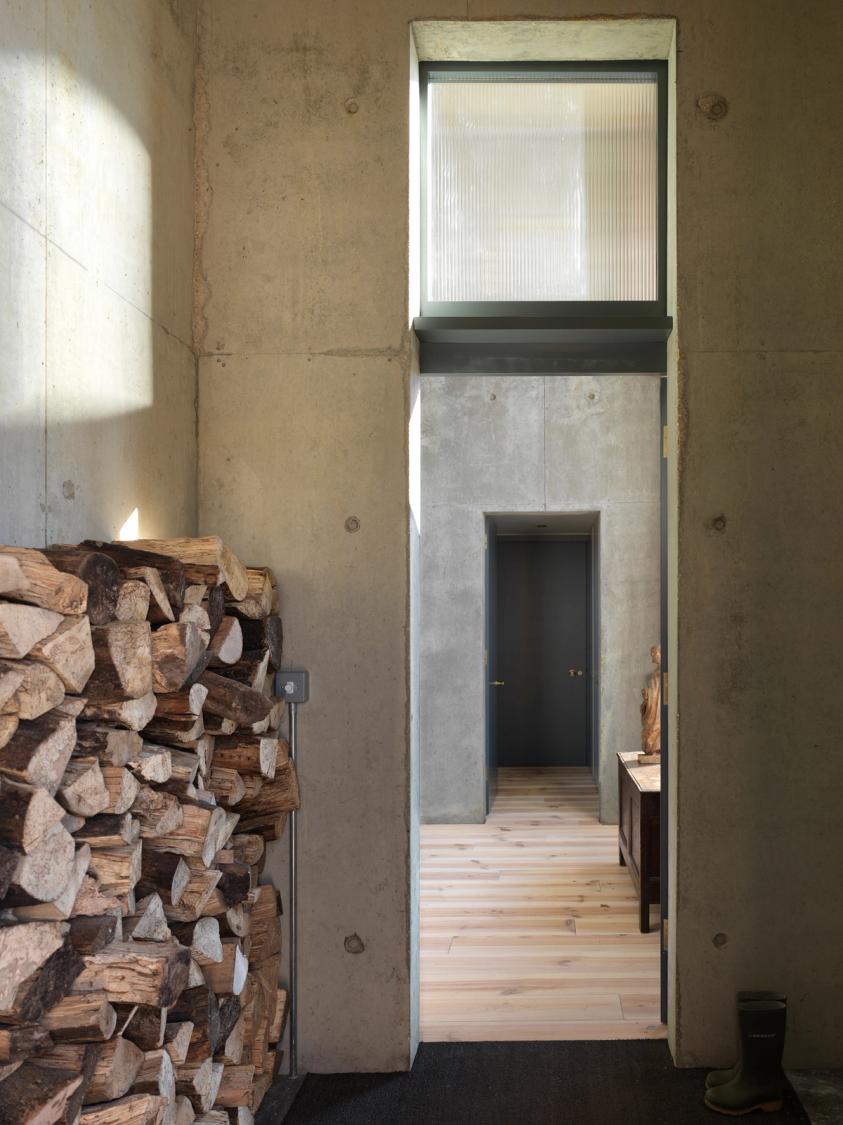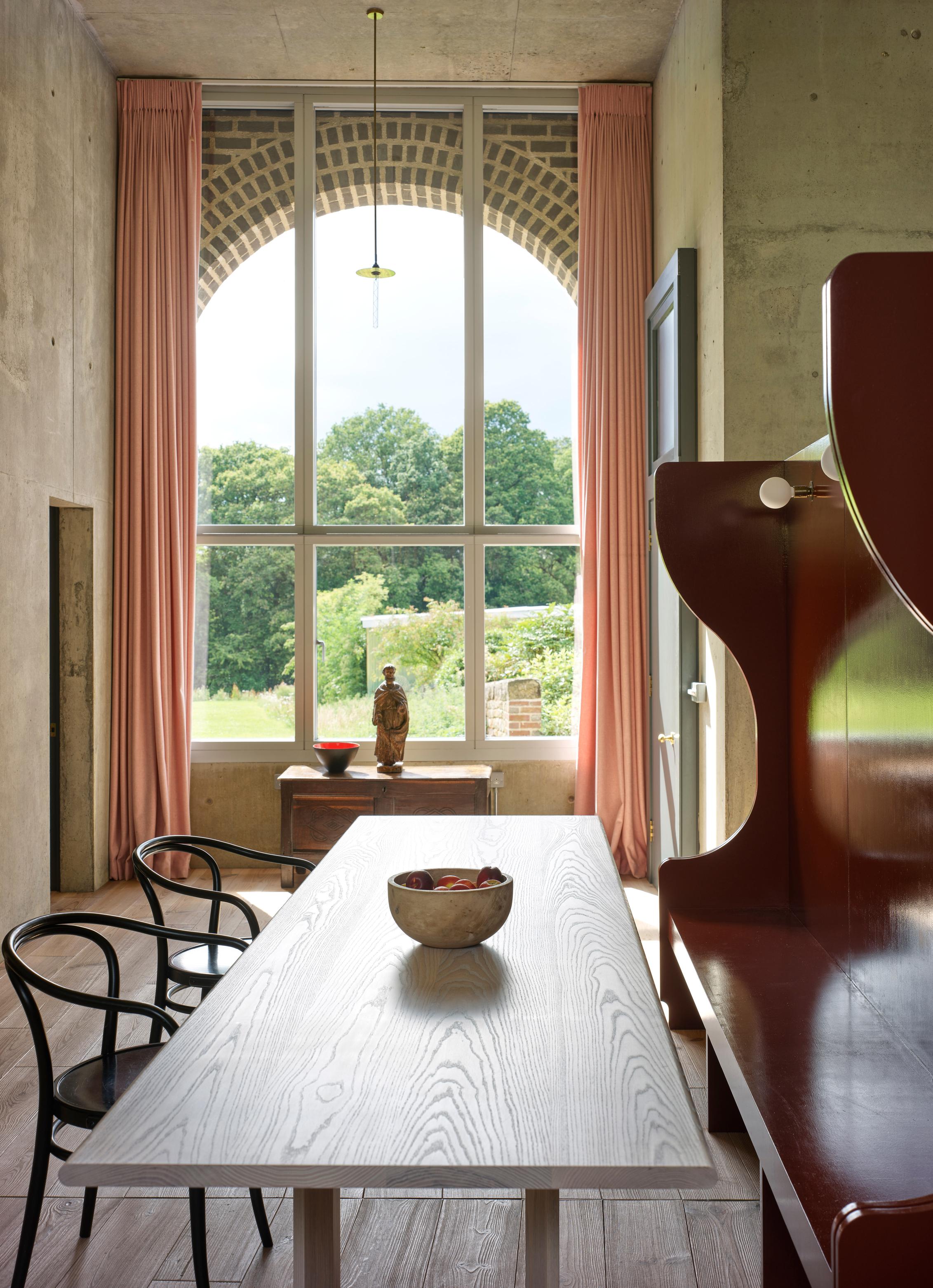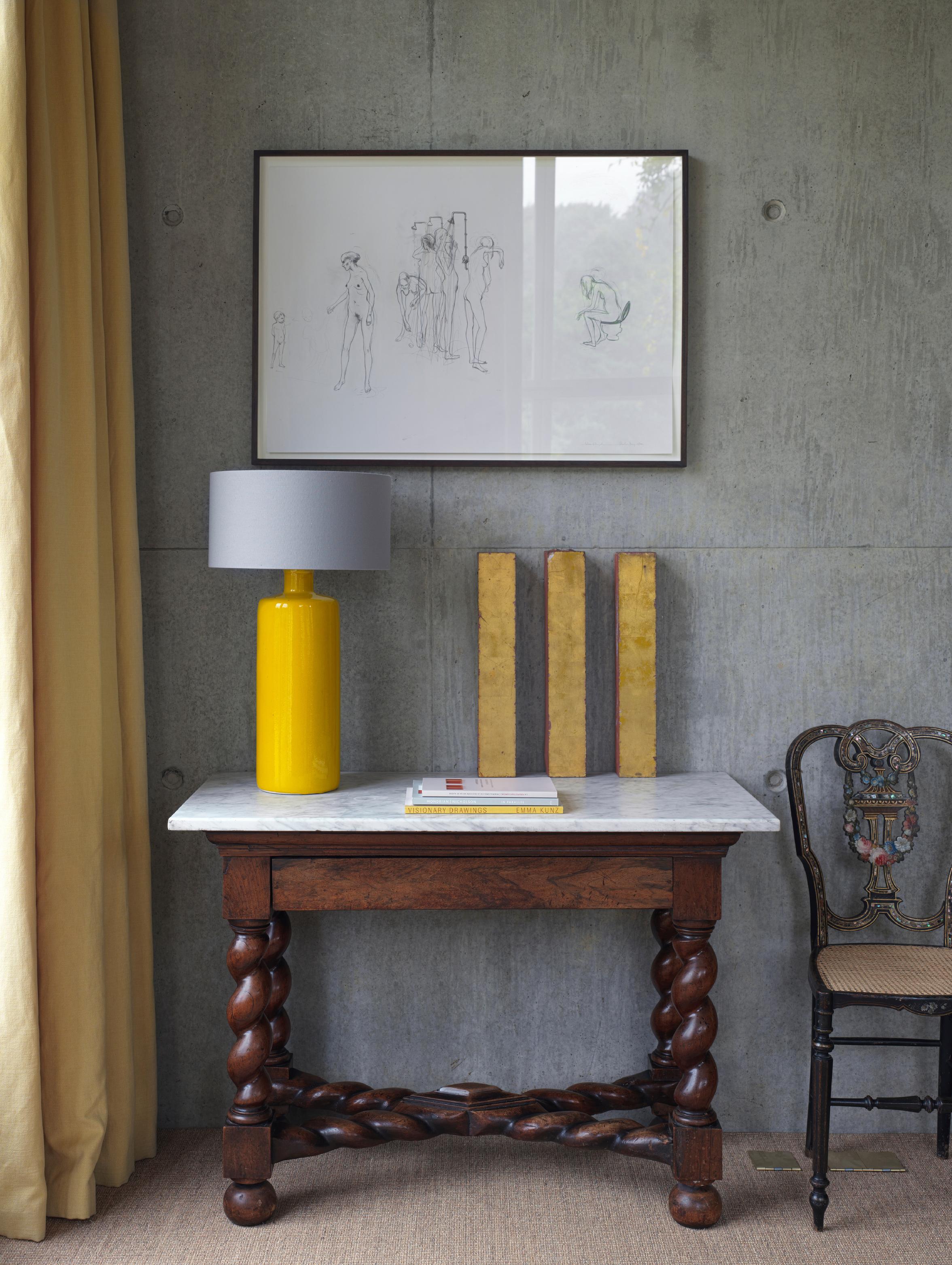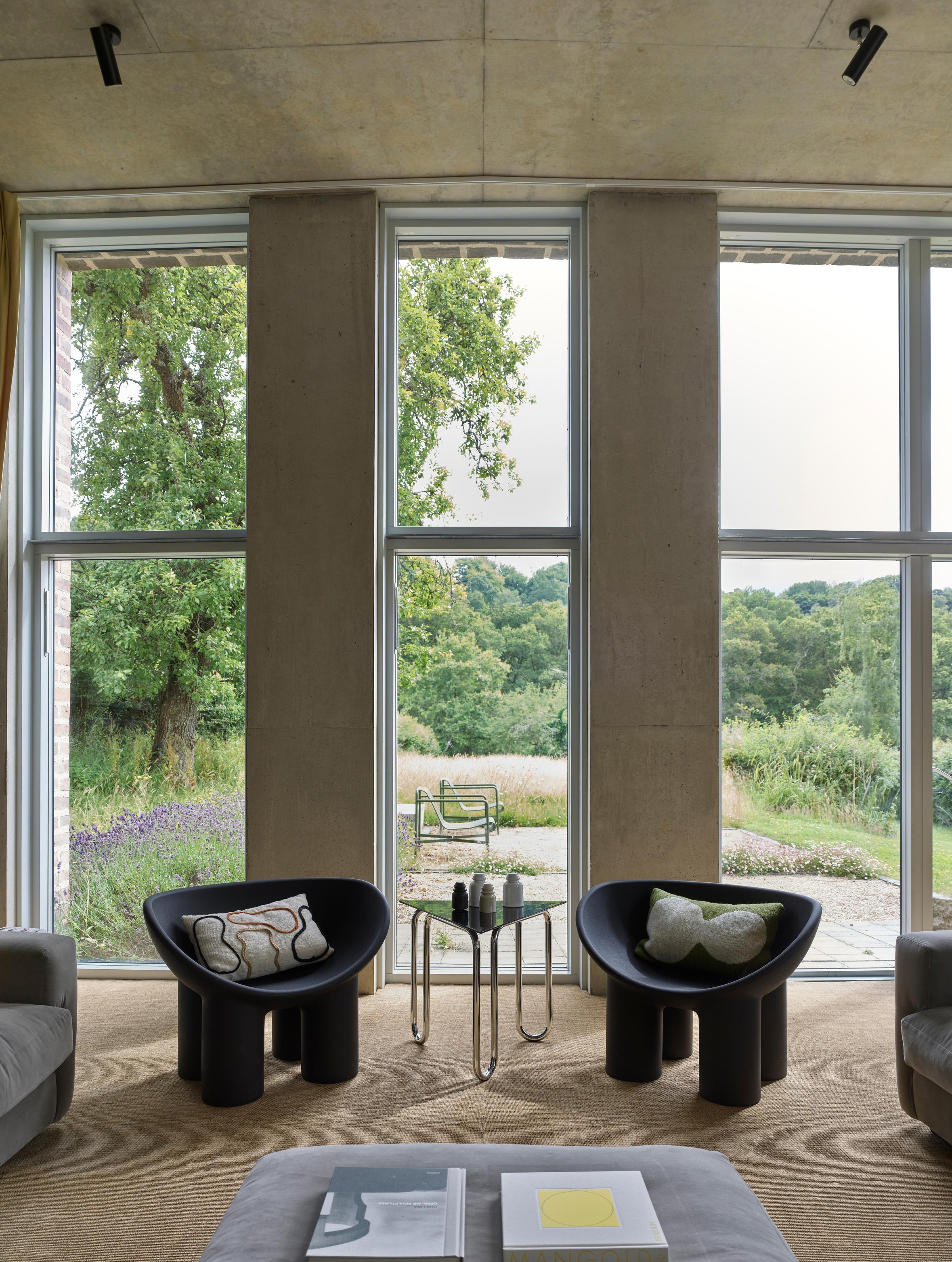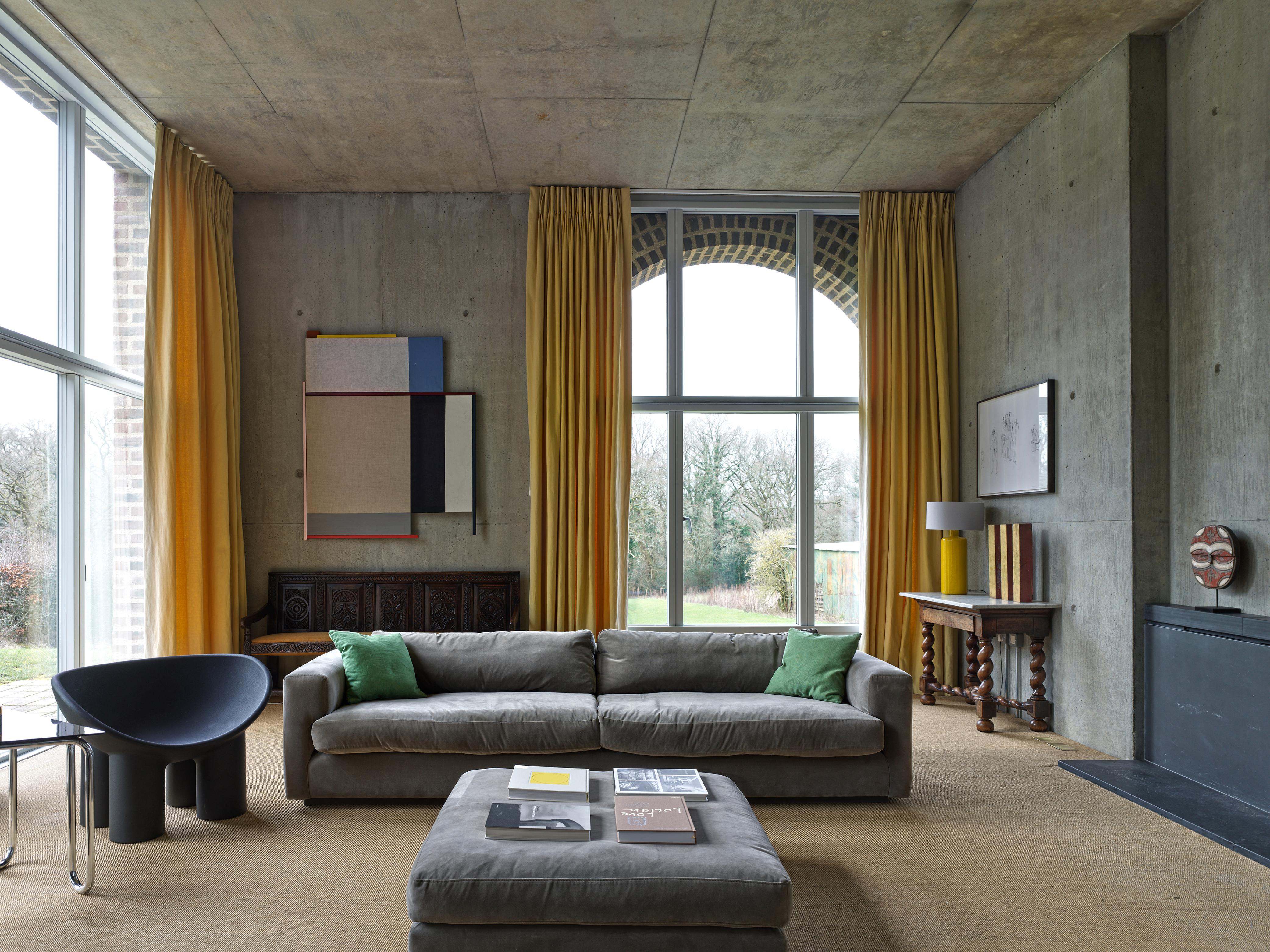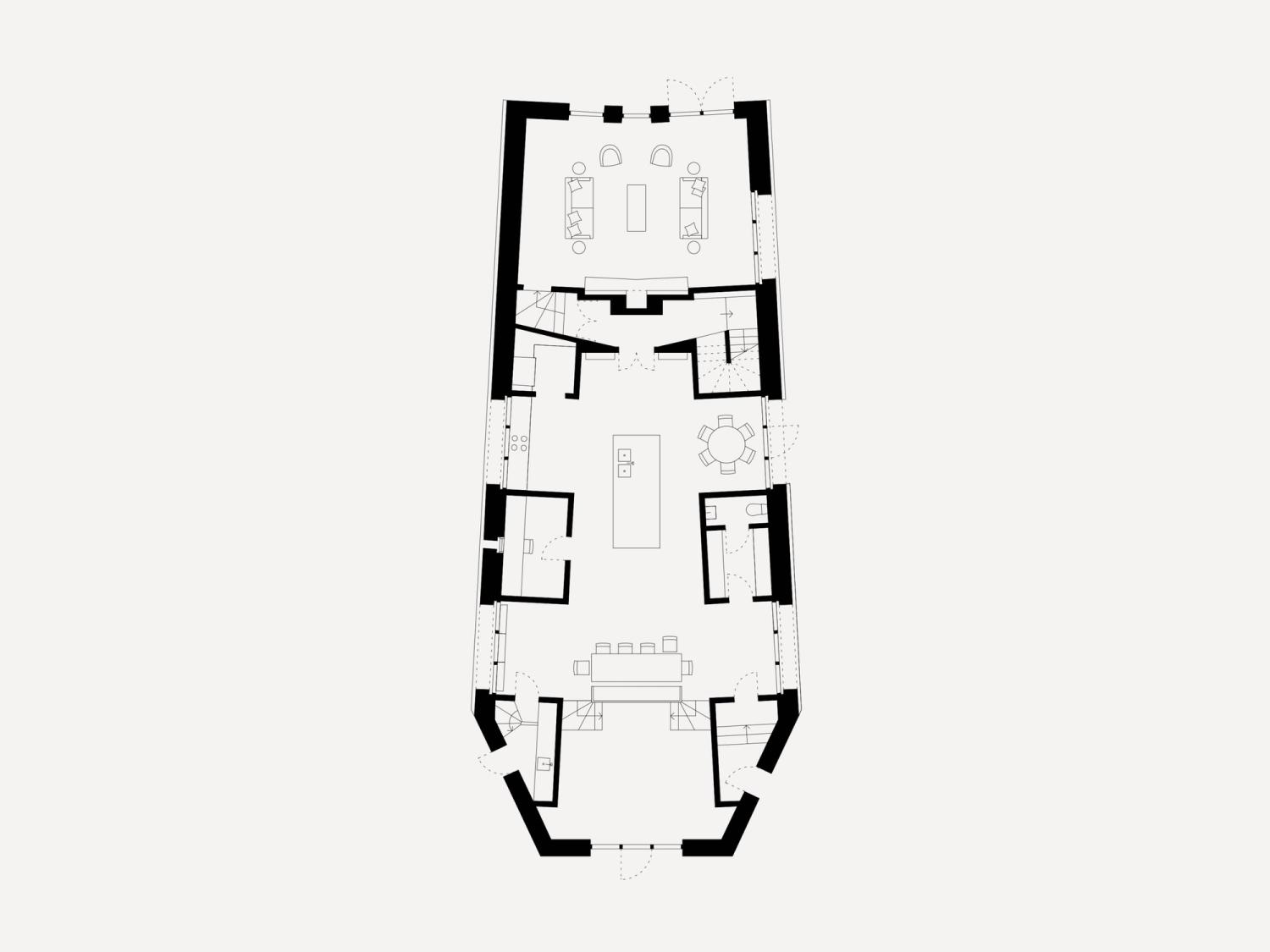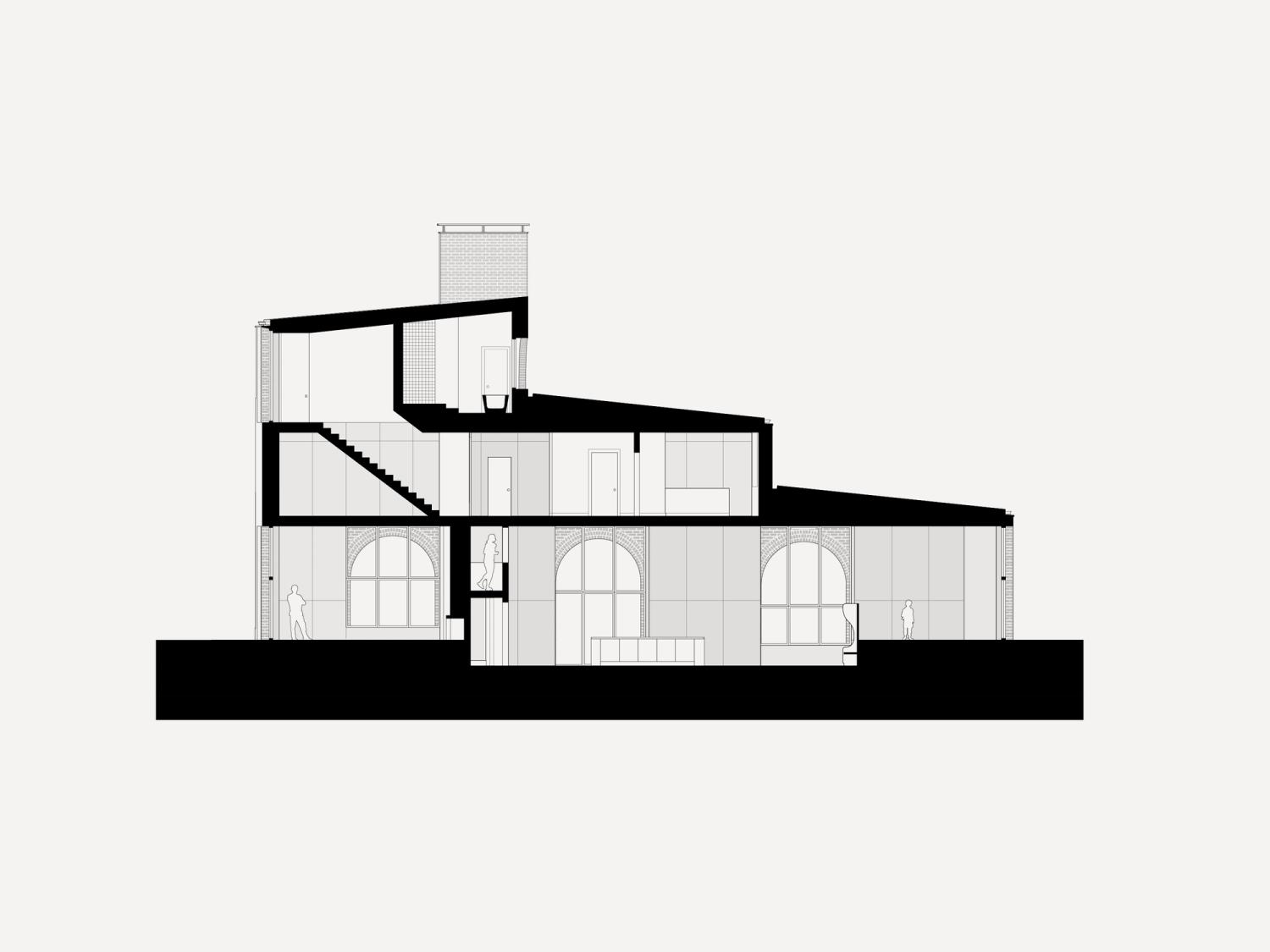Nithurst Farm
Sussex, UK, 2019
Nithurst Farm is a new-build family home for the architect and his family in the South Downs National Park. The house is built from structural concrete and wrapped in a thick brick skin. Arched brick window openings give ‘cadence’ to the long side elevations. The backs of these arches are visible from within the house, differentiating the inner and outer leaves. By contrast, the south elevation rises to form a 3 storey tower, expressed as a grid.
The ground floor plan consists of two main spaces, with six internal concrete towers, each, containing a secondary room such as a cloakroom, study and larder. The main space is a 4.5 metre high kitchen, dining and family room. It is tapered on N-S axis, creating a false perspective that heightens the sense of a journey to the main sitting room, the house’s principal space within the tower.
A dark, labyrinthine passage leads to the light-filled sitting room, exaggerating its impact. Internally the exposed structural concrete walls and ceilings are left deliberately rough-and-ready: just as they came out of the formwork.
The house feels both ancient and contemporary – its weighty and tactile materials speak to those of the surrounding farm buildings, whilst the abstraction of its stepped form is suggestive of minimalist sculpture. The character of this space is informed by Renaissance drawings and by Palladio’s plan for the Villa Barbaro. With influences ranging from Vanbrugh to Tarkovsky, the design has multiple layers of reference and association, each informing the whole, enhancing its meaning, whilst creating a beautiful place to live.
Photos: Brotherton-Lock







